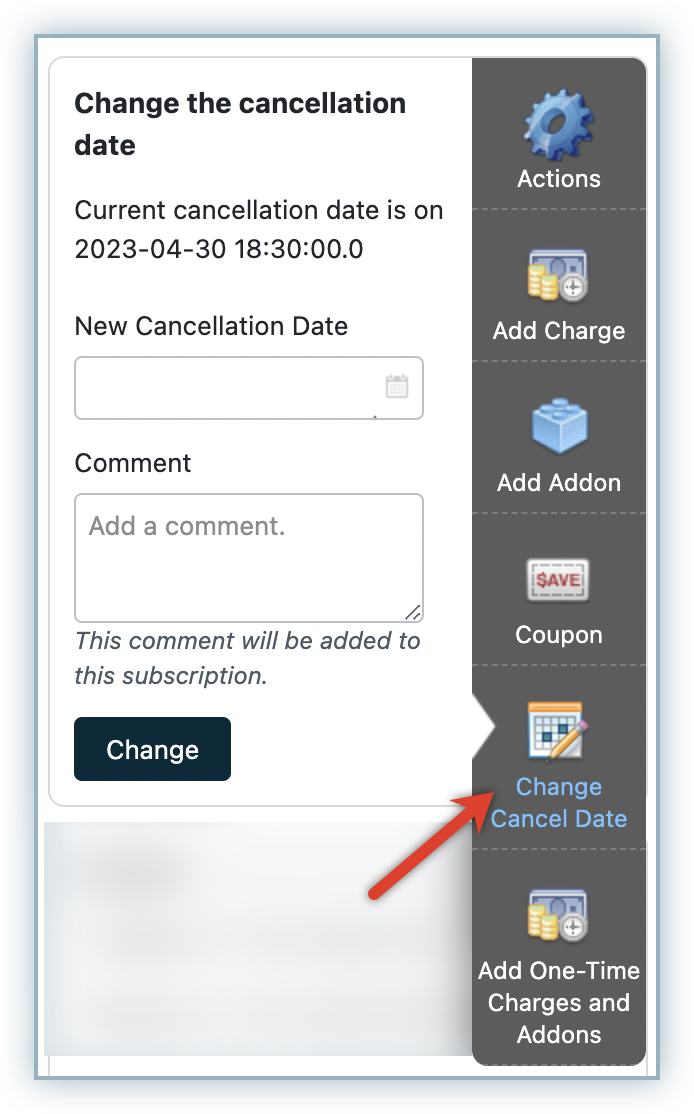When an active subscription moves to an inactive state and further renewals do not take place, it is said to be canceled. An active subscription can be canceled any time. There are five ways in which a subscription can be canceled:
Subscription cancellation can happen due to various reasons. If a subscription gets canceled for any of the below mentioned cases, the subscription_canceled event will notify you the reason for the cancellation.
If the subscription gets canceled due to any other reason, the subscription_canceled event will not hold the reason for cancellation.
You can configure Chargebee's default subscription cancellation settings by navigating to: Settings > Configure Chargebee > Subscription Cancellation

The below table explains the various options available for each setting.
| Setting | Options Available |
|---|---|
| When a subscription has to be canceled | Cancel immediately: Cancels the subscription immediately. Cancel at end of term: Waits until the next renewal date and then cancels (changes the subscription status to non-renewing). Cancel on a specific date: Waits till the scheduled date and then cancels. You can set the precise date and time of cancellation. |
| When a subscription is cancelled mid-term, how do you want to handle credits for the unused period? | Don't issue credits: The subscription is canceled without giving any credits for the unused period. Issue prorated credits: The subscription is canceled and prorated credits are given for the unused period. (Not advised for shippable subscriptions as proration in Chargebee is time-based.) Issue full credits: Issues full credits for the entire term. |
| When subscription is canceled, include the cancellation date in the billing period? | This setting is only available when Chargebee is running on day-based billing mode. When enabled, a subscription canceling on a particular date will end its term on the same date. When disabled, the subscription will end its term on the day before the cancellation date. |
| If there are existing refundable credits | Retain credits: No action is taken against the credits. Initiate refund: Initiates the refund of the credits. |
| If there are existing unpaid invoices for the canceled subscription | Retain as unpaid: No action is taken against the invoice. Attempt Collection: A charge is attempted on the available payment method if auto-collection is enabled. If the payment fails, the invoice is retained as payment due. Write Off: The amount due is written off. |
| If there are existing unbilled charges for the canceled subscription | Invoice Charges: The unbilled charges will be invoiced and a charge is attempted on the available payment method if auto-collection is enabled. If the payment fails, the invoice is marked not paid. Delete Charges: The unbilled charges will be deleted. |
| Apply refundable credits/excess payments, if any, to unpaid invoices. | This toggle allows you to apply to the unpaid invoices, any refundable credits/excess payments that are present for the customer record. |
Chargebee also allows you to override the default settings or add a condition. You can perform these actions by clicking the vertical ellipsis available next to each setting.

When the number of billing cycles increases for a subscription or when the subscription is changed to a plan that has a different term period, it will switch from non-renewing state to active state.
Example
If the number of billing cycles for a monthly subscription, scheduled for cancellation (number of billing cycles set to 0) is set to any non-zero number, or if the plan is changed to a yearly one using the Edit Subscription operation, the subscription will become active.
Customers can be offered a way to turn their subscriptions to active from non-renewing by extending their subscription.
The date/time of cancellation for a subscription which is scheduled to be canceled upon the next renewal can be changed via web interface (using the option Edit Scheduled Cancellation available on the Action panel of the subscription details page) or using the Change term end API .
If the cancellation date is postponed, the subscription will still continue to be in the non-renewing state, until the cancellation date/time. An option to raise prorated charges for the extended period is also made available while performing this action.

Classic UI users
You can change the cancellation date using Change Cancel Date option on the Action panel.

To remove the cancellation scheduled, use the option Remove Scheduled Cancellation on the Action panel.
To re-start the billing for a canceled subscription, you need to ‘reactivate' your subscription. Learn more.
Your Chargebee site must be in day-based billing mode.
In this mode, it is implied that the cancellation happens at the end of the day.